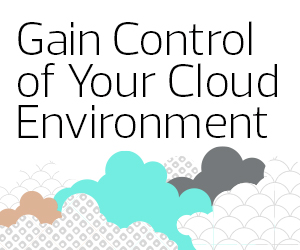How Sentara Health Approaches Cloud-First Strategies
Sentara Health has nearly 30,000 employees and serves communities in Virginia and North Carolina. The large system recently launched a joint venture focused on cloud-first solutions to help healthcare organizations modernize their environments.
“The first bottom line is that many CIOs in healthcare do not have the skill sets in their own organizations to move the cloud,” Thomas says. “Because of what we’ve learned, we’re at the forefront of large-scale movements of systems to cloud.”
Thomas joined Sentara Health in 2018 with the goal of driving the organization to cloud-supported solutions, starting with the largest on-premises data set.
“When we started deploying our first workloads into Azure, we designed backup as a core part of it,” Thomas says. “We set all the policies up before we deployed our first solution set into Azure. That was two months, so it was a very quick evolution.”
This year, Thomas says, close to 80 percent of the organization is supported by cloud solutions. Within the next 18 months, Sentara Health will leave its last on-premises backup solutions and move it all to the cloud.
DISCOVER: Children’s hospitals find space to grow through the cloud.
Why Asante Went with a Hybrid Cloud Model
In southern Oregon, health system Asante adopted HPE’s GreenLake, a hybrid edge-to-cloud platform for its critical on-premises data services. The process of discovery, setup and handoff took about 18 months, says Asante ITS Operations Manager Tim O’Rourke.
“Our internal cloud has been a very valuable resource, spanning redundant systems across data centers in different buildings and on different sites. We have been able to deliver most of the benefits of the public cloud to our internal customers for years. Now, under GreenLake, Asante can also realize the financial benefits,” O’Rourke says.
Asante’s rural location doesn’t offer wide availability of high-capacity internet access, nor is it nearby public cloud data centers, so the health system uses cloud services only for data backup and under a Software as a Service model for some applications.
“Our first GreenLake initiative was for HPE Primera storage arrays,” O’Rourke says. Though Primera is a hardware solution, it has the performance and agility of the cloud. “The program allowed us to spec equipment at a level that we could not have capitalized in a single fiscal year.”
O’Rourke says his team first studied how the GreenLake program would work, assessing the benefits, risks, costs, support needs and lifecycle management. He discussed the implications of the shift from capitalized to operationalized server/storage infrastructure with Asante’s finance department and senior leadership.
“We had internal discussions about how on-premises cloud resources would be managed, usage reported, budgets established and project chargebacks processed under the GreenLake model,” O’Rourke says.












